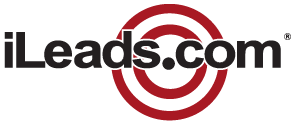
Welcome to iLeads Insurance Market Minute, where we bring you the latest, most relevant news regarding the insurance market. Last week you were reading As Cyberattacks Rise, Cyber Insurers Are Rethinking Their Business. This week we’re bringing How Insurance Agents Can Strike The Balance:
Global Commercial Insurance Price Hikes Moderated Further in Q2: Marsh*
Global commercial insurance prices rose 15% in the 2021 second quarter, continuing a stunning track record of increases but far from their peak at the end of 2020, according to a new Marsh report.
The Q2 numbers reflect the 15th consecutive quarter of price increases. But prices jumped 18% in the 2021 first quarter and 22% in the 2020 fourth quarter, which appears to be the peak, the report noted.
Marsh said pricing momentum has moderated due to a mostly slower rate of increase in property insurance and directors and officers liability insurance. At the same time, however, property insurance pricing climbed back up in Europe. In Asia, Latin America and the Caribbean, there was a moderate acceleration for financial and professional lines rate increases.
Cyber insurance continued to resist pricing moderation, jumping 56% in the U.S. and 35 percent in the UK, something Marsh said was driven by increased frequency and loss severity.
Composite prices increases for the second quarter grew 12% in the U.S., 28% in the UK, 13% in Continental Europe, 4% in Latin America and the Caribbean, 6% in Asia and 23% in the Pacific region, Marsh said.
Here are other U.S. highlights from the second quarter:
- U.S. D&O insurance for publicly traded companies grew 15%, lower than the 27% jump in the 2021 first quarter. The reason: higher competition and new capacity. In April and May 2021, excess rate increases were less than primary increases – something that hasn’t happened since January 2019.
- While cyber pricing in the U.S. jumped 56 percent in the quarter, that included a 68% leap in June, due to ransomware claims frequency and severity. Ransomware payments during the quarter typically exceeded $1 million. Many insurers narrowed their ransomware losses, with tightly management limit deployment on any one risk as a result, the report said.
- U.S. commercial property insurance pricing grew by 9%, but the rate of increase has decelerated steadily, falling from 18% in January to 7% in June.
- U.S. commercial casualty insurance pricing increased 6%, but excluding workers comp, the increase was 10%.
- U.S. excess liability is expected to experience continued rate pressure through 2021, though less than a year ago.
Gulfstream Insurance Admits Insolvency, Agrees to Liquidate*
Personal residential insurer Gulfstream Property and Casualty Insurance Co. has agreed to liquidate according to a July 22 order signed by the Florida Office of Insurance Regulation.
The Florida Department of Financial Services must agree to receivership before the liquidation process can formally begin. Once the DFS signs off, Gulfstream customers will have 30 days to find new coverage.
In the OIR’s Consent To Order Of Receivership, Commissioner David Altmaier wrote that the office has determined that “one or more grounds exist for the initiation of delinquency proceedings,” which include Gulfstream’s admission of insolvency.
The liquidation process caps off a tumultuous stretch for the Sarasota-based insurer.
Gulfstream was placed under administrative supervision in late June after it failed to maintain the minimum surplus necessary to pay claims. Weeks earlier, ratings firm Demotech Inc. withdrew its “A” designation, citing the company’s shaky finances.
Gulfstream suffered significant losses in 2020. The company reported a decrease in surplus of more than $5.2 million as of Dec. 31, 2020 compared with the same date in 2019 including a net loss of $22.6 million and a net underwriting loss of $34.9 million.
Gulfstream was in the process of securing a well-heeled investor this year until a string of severe winter storms forced higher required contributions, leading the suitor to pull out.
How insurance agents can strike the balance in “moments of truth”*

Catastrophic weather events are a stark reminder of the value of insurance agents. While there’s nothing an agent can do to prevent Mother Nature from conjuring a tornado or igniting a wildfire, there’s a lot that they can do in the “moment of truth” immediately after an event.
Over the weekend, the Dixie Fire – California’s largest active wildfire – merged with the smaller Fly Fire to reach a total of over 197,000 acres burned, with 22% containment. Together, the two fires are tearing through communities in Northern California, destroying homes and structures in their path.
When someone’s home is destroyed by a wildfire, a windstorm or a flood, one of the first people that they reach out to is an insurance professional. In smaller communities, that professional is often their insurance agent, whom they have a personal relationship with.
The call goes something like this: “My home has been destroyed. Everything I own has burned to the ground. What should I do? Please help me.”
That is what Beth Riczko (pictured), Nationwide’s president of P&C personal lines, describes as a “moment of truth”. At that moment, when a client’s life has been turned upside down, it is the human touch, the empathy, and the voice at the other end of the phone or (in non-COVID times) in person, that really makes the difference. Everything else in the relationship between insurance agents and their clients is superfluous at that exact point in time … but not for long.
Finding highly affordable leads to keep sales coming in
At iLeads, we have many great solutions for insurance agents at a low cost. If you’d like to see how we can help you bring in consistent sales for a great price, give us a call at (877) 245-3237!
We’re free and are taking phone-calls from 7AM to 5PM PST, Monday through Friday.
You can also schedule a call here.
